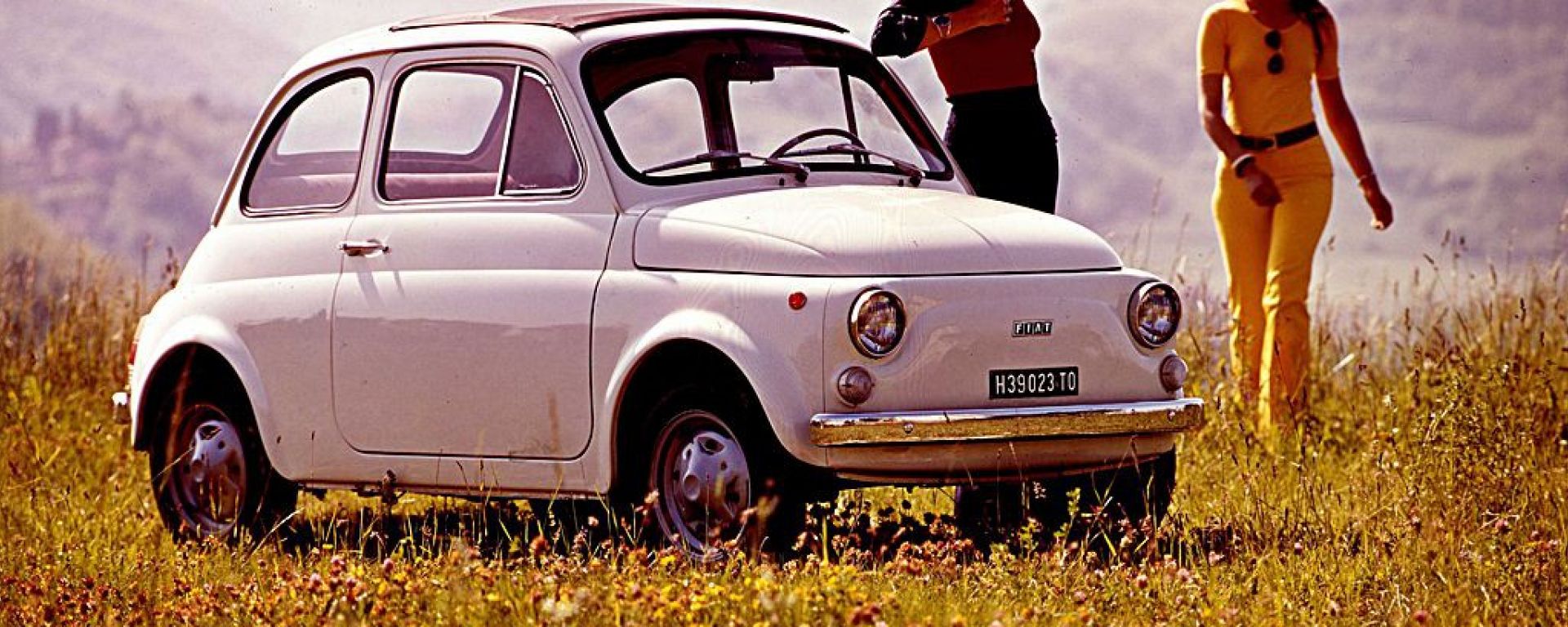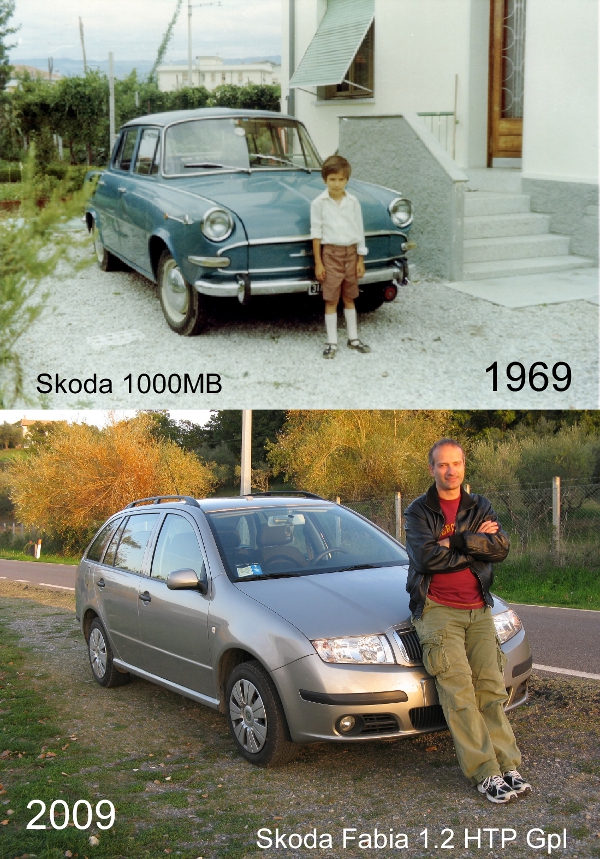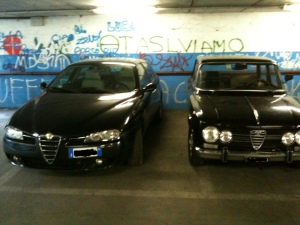The automobile is a symbol of progress and represents the time in which it was produced. In Italy, the first car for everyone was the Fiat 500, a small work of art in keeping with the canons of beauty of the historic centres that any Italian city, large or small, can boast. It was a true Italian car for Italians. It is still loved and beautiful today. At the end of the 1950s, the economic boom was about to begin and for some people it was possible to buy a small car, which was also cheap to maintain, like the 500. Thus began the motorisation of Italy. Those who could afford something extra bought a 600, which had already been produced for a few years. Then in the middle of the 1960s came the 850, almost a sedan, a car for those who could really afford something extra, for the almost rich. The ‘entry-level’ cars then became the 127 and 128.
 |
 |
Alfa Romeo, which had produced unheard of things like the 1900 in the early 1950s and the Giulietta in the late 1950s, invented the Giulia and it was a huge success. It was a whole other planet, or perhaps better to say galaxy, than its contemporaries. Alfa Romeo taught the world how to make cars of a certain type. Those cars were not for everyone, they cost a bit: having been derived from racing, a solution was implemented for the ‘normal’ customer who could drive around the streets of Italy ‘the car that wins’. The Alfa Romeo myth was born at the same time as yours truly, and perhaps this is why I carry a passion, albeit a moderate one, for the myth. Then, as Italians became more affluent on average, foreign cars became more and more available and over the years took over in some areas.
Generalising a lot, Italian cars today are considered to be of inferior quality to foreign cars, particularly German ones. In reality, this is not true. There have been dark periods but in general an Italian car has nothing to envy to a direct German competitor (certainly the very rich German brands offer much more choice, especially in the more expensive sectors). But perhaps the point is precisely that once upon a time people built cars for passion, while today they only build them in order to sell. I’m not saying they were better times, it’s just maybe that I was young; they were the so-called “lead years” and there was the Cold War. Today, too, we have no shortage of problems, but these are different times; with passion you risk bankruptcy (as happened with Alfa Romeo). It is the global economy, baby, dominated by finance and marketing. The car is often a status symbol and in the society of appearance, cars that give an image of economic success sell better. The cars of yesteryear have another soul, Alfa Romeos in particular. Those were years when owning a car had a totally different meaning….
I’ve always liked driving, but I never dreamed of having luxury or super sports cars like Ferrari or Porsche. Ever since I was a child, I have always been fascinated by everyday cars, the ones I saw populating the cities more and more every year, until there were just too many of them. But looking at an old car makes me think that it had once been the latest model, a bit like what happens to human beings when they think back to their youth and how different the times were when those models were modernity. Probably this page on my website is a symptom that I am getting older: when I look at an old car I am taken back in time, like an old song takes us back to the emotions we felt in a bygone age.

I was only a few years old when my father bought his first used car, a Skoda 1000 (above I am pictured in front of it on my 5th birthday); a few days after my 42nd birthday I bought my first new car, a Skoda Fabia
As far as possible, I have always tried to have a car that for some reason I was interested in, that I enjoyed driving, but absolutely without any fanaticism. For me, the car is a meeting of technology and design, a symbol of travel, if you like, also a bit about freedom, a bit about history, too. In fact, I really like to link the various car models, perhaps those that have left their mark, to the historical period in which they travelled the roads.
“The car is interesting in itself, as an object, as a lump of imagination, it has a dual nature, it moves and it occupies, it transports me and it can kill me” (E. Benassi). Cars infest our cities and pollute them. The disposal, but also the production, of cars pollutes the planet. A quandary: do we pollute more by buying a new car that is less polluting but has polluted during the production process, or by keeping an old car for longer? Governments subsidise car companies in crisis, every household owns more than one car, etc. We should try to limit certain excesses, but at the same time, since it is necessary and since you only live once, why deny yourself the pleasure of driving, if for someone that is a pleasure? As in everything, just don’t push it too far….
And now we begin with memories.
Our first family car was an old Skoda from the 1960s. A Skoda was also the first (and last) car I bought new. Today my father uses it, so he has returned to Skoda after 40 years. Even as a child, I used to ask him the names of the various car models and pester him with questions about cars. Like many children, after a while I was able to recognise the various models I came across. Right from the start I became fond of the Alfa Romeo Giulia.
Decades later, after taking far greater satisfaction from myself, I can say, for what it’s worth, that I have managed to have cars that are the successors to some of my dreams from back then. After driving the Alfa 156, descendant of the Giulia, for over 10 years, I later had the successor to the Ritmo that I loved as a boy, a Fiat Bravo. And today I have returned to Alfa Romeo with a stunning 159, descendant of the Alfetta and the 1750/2000s of the 1970s.
La Skoda >
